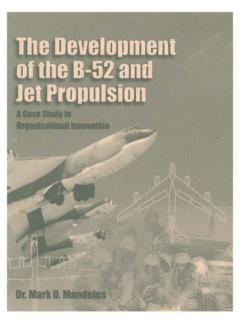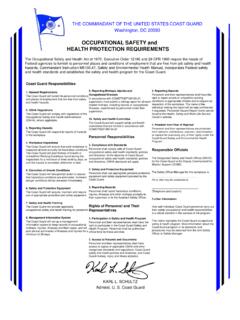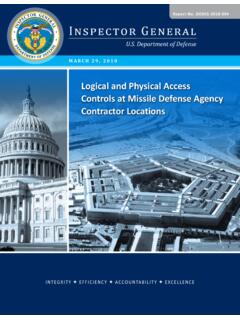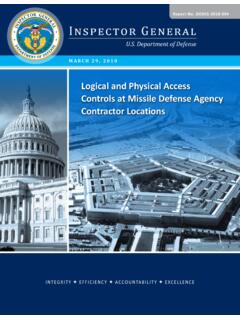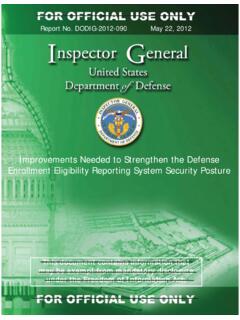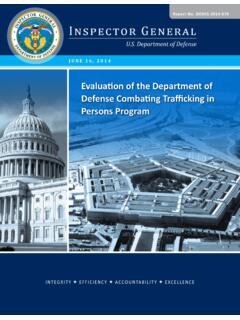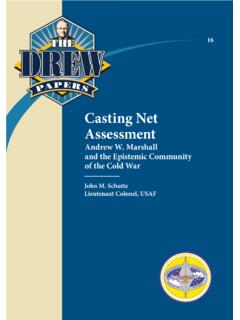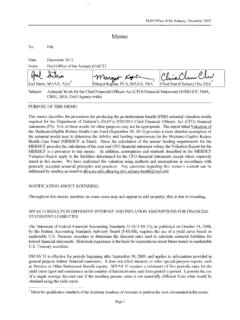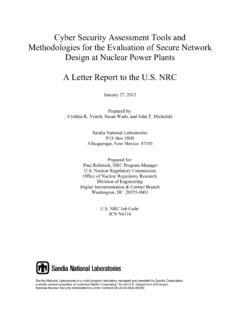Transcription of SUMMARY - U.S. Department of Defense
1 Department OF DEFENSECYBER STRATEGYSUMMARYThis page left intentionally blank 1 D O D C Y B E R S T R A T E G Y INTRODUCTION American prosperity, liberty, and security depend upon open and reliable access to information. The Internet empowers us and enriches our lives by providing ever-greater access to new knowledge, businesses, and services. Computers and network technologies underpin military warfighting superiority by enabling the Joint Force to gain the information advantage, strike at long distance, and exercise global command and control. The arrival of the digital age has also created challenges for the Department of Defense (DoD) and the Nation.
2 The open, transnational, and decentralized nature of the Internet that we seek to protect creates significant vulnerabilities. Competitors deterred from engaging the United States and our allies in an armed conflict are using cyberspace operations to steal our technology, disrupt our government and commerce, challenge our democratic processes, and threaten our critical infrastructure. We are engaged in a long-term strategic competition with China and Russia. These States have expanded that competition to include persistent campaigns in and through cyberspace that pose long-term strategic risk to the Nation as well as to our allies and partners.
3 China is eroding military overmatch and the Nation s economic vitality by persistently exfiltrating sensitive information from public and private sector institutions. Russia has used cyber-enabled information operations to influence our population and challenge our democratic processes. Other actors, such as North Korea and Iran, have similarly employed malicious cyber activities to harm citizens and threaten interests. Globally, the scope and pace of malicious cyber activity continue to rise. The United States growing dependence on the cyberspace domain for nearly every essential civilian and military function makes this an urgent and unacceptable risk to the Nation.
4 The Department must take action in cyberspace during day-to -day competition to preserve military advantages and to defend interests. Our focus will be on the States that can pose strategic threats to prosperity and security, particularly China and Russia. We will conduct cyberspace operations to collect intelligence and prepare military cyber capabilities to be used in the event of crisis or conflict. We will defend forward to disrupt or halt malicious cyber activity at its source, including activity that falls below the level of armed conflict. We will strengthen the security and resilience of networks and systems that contribute to current and future military advantages.
5 We will collaborate with our interagency, industry, and international partners to advance our mutual interests. During wartime, cyber forces will be prepared to operate alongside our air, land, sea, and space forces to target adversary weaknesses, offset adversary strengths, and amplify the effectiveness of other elements of the Joint Force. Adversary militaries are increasingly reliant on the same type of computer and network technologies that have become central to Joint Force warfighting. The Department will exploit this reliance to gain military advantage. The Joint Force will employ offensive cyber capabilities and innovative concepts that allow for the use of cyberspace operations across the full spectrum of conflict.
6 2 D O D C Y B E R S T R A T E G Y The 2018 Department of Defense Cyber Strategy represents the Department s vision for addressing this threat and implementing the priorities of the national Security Strategy and national Defense Strategy for cyberspace. It supersedes the 2015 DoD Cyber Strategy. The United States cannot afford inaction: our values, economic competitiveness, and military edge are exposed to threats that grow more dangerous every day. We must assertively defend our interests in cyberspace below the level of armed conflict and ensure the readiness of our cyberspace operators to support the Joint Force in crisis and conflict.
7 Our Soldiers, Sailors, Airmen, Marines, and civilian employees stand ready, and we will succeed. STRATEGIC COMPETITION IN CYBERSPACE The United States strategic competitors are conducting cyber-enabled campaigns to erode military advantages, threaten our infrastructure, and reduce our economic prosperity. The Department must respond to these activities by exposing, disrupting, and degrading cyber activity threatening interests, strengthening the cybersecurity and resilience of key potential targets, and working closely with other departments and agencies, as well as with our allies and partners.
8 First, we must ensure the military s ability to fight and win wars in any domain, including cyberspace. This is a foundational requirement for national security and a key to ensuring that we deter aggression, including cyber attacks that constitute a use of force, against the United States, our allies, and our partners. The Department must defend its own networks, systems, and information from malicious cyber activity and be prepared to defend, when directed, those networks and systems operated by non-DoD Defense Critical Infrastructure (DCI)1 and Defense Industrial Base (DIB)2 entities.
9 We will defend forward to halt or degrade cyberspace operations targeting the Department , and we will collaborate to strengthen the cybersecurity and resilience of DoD, DCI, and DIB networks and systems. Second, the Department seeks to preempt, defeat, or deter malicious cyber activity targeting critical infrastructure that could cause a significant cyber incident regardless of whether that incident would impact DoD s warfighting readiness or capability. Our primary role in this homeland Defense mission is to defend forward by leveraging our focus outward to stop threats before they reach their targets.
10 The Department also provides public and private sector partners with indications and warning (I&W) of malicious cyber activity, in coordination with other Federal departments and agencies. Third, the Department will work with allies and partners to strengthen cyber capacity, expand combined cyberspace operations, and increase bi-directional information sharing in order to advance our mutual interests. 3 D O D C Y B E R S T R A T E G Y The Department s cyberspace objectives are: 1. Ensuring the Joint Force can achieve its missions in a contested cyberspace environment; 2. Strengthening the Joint Force by conducting cyberspace operations that enhance military advantages; 3.
